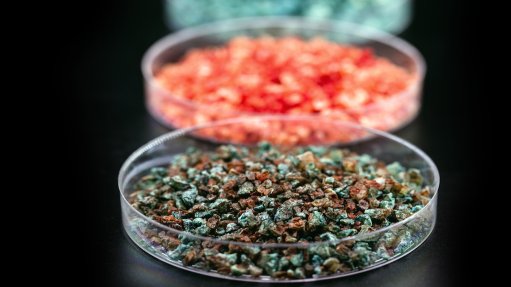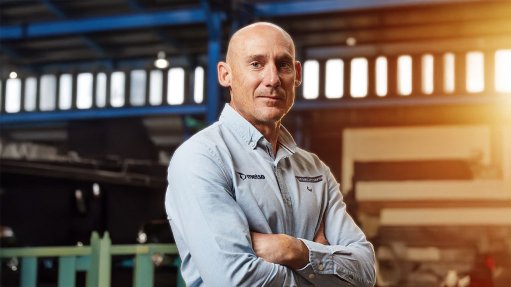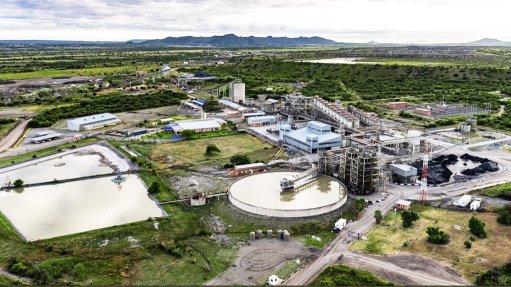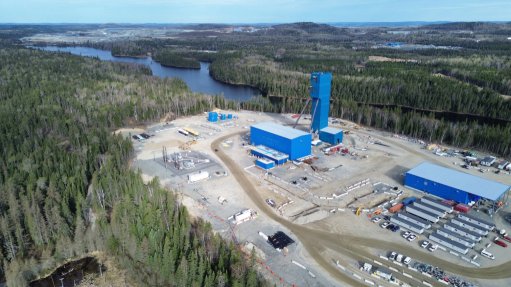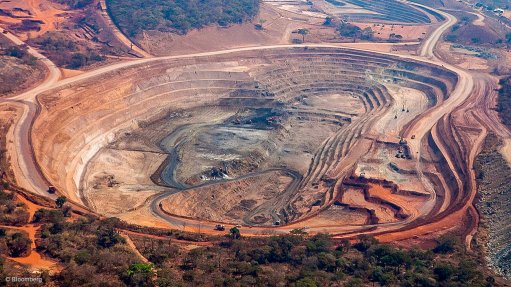Chevron's CCS plans at Gorgon falter
PERTH (miningweekly.com) – US energy major Chevron on Monday conceded that it had failed to capture sufficient greenhouse-gas (GHG) emissions at its Gorgon oil and gas project, and was now working with the Western Australian regulator to make-up the shortfall.
Under the terms of the project’s approval, the Gorgon liquefied natural gas (LNG) operation is meant to capture some four-million tonnes a year of carbon dioxide, or 80% of the carbon extracted from its reservoir gas.
Chevron on Monday revealed that the Gorgon LNG facility is now poised to reach a major milestone, injecting five million tonnes of GHG since safely starting the system in August 2019.
The US energy giant said that the milestone represented the largest volume of injection achieved within this time frame by any environmental carbon capture and storage (CCS) system of comparable specifications.
“This significant milestone shows how we’re deploying technology, innovation and skills to deliver cleaner energy and reduce our carbon footprint,” Chevron Australia MD Mark Hatfield said.
“The Gorgon CCS system is the biggest CCS system designed to capture carbon emissions and is demonstrating Australia’s world-leading capability in the area.”
Once fully operational, the system will capture up to four-million tonnes of carbon dioxide (CO2) annually and reduce GHG emissions by more than 100-million tonnes over the life of the injection project.
The system works by taking naturally occurring CO2 from offshore gas reservoirs and injecting it in a giant sandstone formation 2 km under Barrow Island, where it remains trapped.
Hatfield said while the system had delivered significant reductions in Gorgon’s emissions, the time taken to safely start the system meant Chevron had not met injection requirements.
"Chevron is working with the Western Australian regulator on making up the shortfall and will report publicly on that later in the year," Hatfield said.
“Like any pioneering endeavour, it takes time to optimise a new system to ensure it performs reliably over 40-plus years of operation.
“The road hasn’t always been smooth, but the challenges we’ve faced – and overcome – make it easier for those who aspire to reduce their emissions through CCS.
“We’re committed to sharing the lessons we’ve learned with state and federal governments, research institutes and other energy producers to assist the deployment of CCS in Australia.
“CCS is a proven technology which experts agree is critical to achieving a lower carbon future while ensuring access to affordable and reliable energy for billions around the world who rely on it.”
The Australian Petroleum Production and Exploration Association (Appea) has applauded Chevron’s efforts, with CEO Andrew McConville saying injecting five-million tonnes of carbon dioxide equivalent was equivalent to taking more than 1.6-million passenger vehicles off Australian roads for 12 months.
“The Australian oil and gas industry is a world leader in the practical deployment of CCS. In Australia, the oil and gas industry has been at the leading edge of researching and deploying CCS and greenhouse gas storage technologies.
“Natural gas with CCS is a pathway to a large-scale clean hydrogen industry. Australia’s LNG export success means the Australian upstream oil and gas industry has the technology, expertise, commercial and trade relationships to further develop CCS and make hydrogen exports a reality,” McConville said.
“Chevron’s announcement is on top of all the work our industry is already doing to combat climate change. The Australian government estimates Australia’s LNG has the potential to lower emissions in LNG importing countries by around 170-million tonnes carbon dioxide, each year by providing an alternative to higher emissions fuels, the equivalent of almost one-third of Australia’s total annual emissions.
“CCS shows that technology can be used to further reduce Australia’s emissions and allows our industry to keep supplying electricity generation and being used for products such as clothes, computers, phones, fertilisers and vital medical equipment such as heart valves.”
Article Enquiry
Email Article
Save Article
To advertise email advertising@creamermedia.co.za or click here
Press Office
Announcements
What's On
Subscribe to improve your user experience...
Option 1 (equivalent of R125 a month):
Receive a weekly copy of Creamer Media's Engineering News & Mining Weekly magazine
(print copy for those in South Africa and e-magazine for those outside of South Africa)
Receive daily email newsletters
Access to full search results
Access archive of magazine back copies
Access to Projects in Progress
Access to ONE Research Report of your choice in PDF format
Option 2 (equivalent of R375 a month):
All benefits from Option 1
PLUS
Access to Creamer Media's Research Channel Africa for ALL Research Reports, in PDF format, on various industrial and mining sectors
including Electricity; Water; Energy Transition; Hydrogen; Roads, Rail and Ports; Coal; Gold; Platinum; Battery Metals; etc.
Already a subscriber?
Forgotten your password?
Receive weekly copy of Creamer Media's Engineering News & Mining Weekly magazine (print copy for those in South Africa and e-magazine for those outside of South Africa)
➕
Recieve daily email newsletters
➕
Access to full search results
➕
Access archive of magazine back copies
➕
Access to Projects in Progress
➕
Access to ONE Research Report of your choice in PDF format
RESEARCH CHANNEL AFRICA
R4500 (equivalent of R375 a month)
SUBSCRIBEAll benefits from Option 1
➕
Access to Creamer Media's Research Channel Africa for ALL Research Reports on various industrial and mining sectors, in PDF format, including on:
Electricity
➕
Water
➕
Energy Transition
➕
Hydrogen
➕
Roads, Rail and Ports
➕
Coal
➕
Gold
➕
Platinum
➕
Battery Metals
➕
etc.
Receive all benefits from Option 1 or Option 2 delivered to numerous people at your company
➕
Multiple User names and Passwords for simultaneous log-ins
➕
Intranet integration access to all in your organisation










